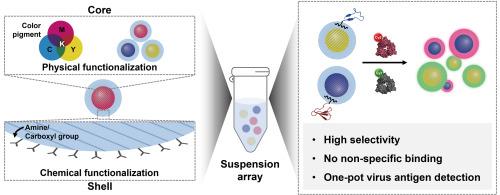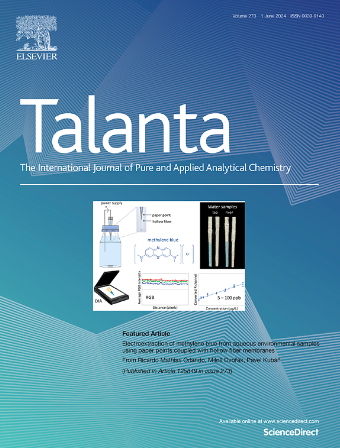Color-encoded multicompartmental hydrogel microspheres for multiplexed bioassays
Abstract
We develop color-encoded multicompartmental hydrogel (MH) microspheres tailored for multiplexed bioassays using a drop-based microfluidic approach. Our method involves the creation of triple emulsion drops that feature thin sacrificial oil layers separating two prepolymer phases. This configuration leads to the formation of poly(ethylene glycol) (PEG) multi-compartmental core-shell microspheres through photopolymerization, followed by the removal of the thin oil layers. The core compartments stably incorporate pigments, ensuring their retention within the hydrogel network without leakage, which facilitates reliable color encoding across varying spatial positions. Additionally, we introduce small molecule fluorescent labeling into the chemically functionalized shell compartments, achieving consistent distribution of functional components without the core's contamination. Importantly, our integrated one-pot conjugation of these color-encoded microspheres with affinity peptides enables the highly sensitive and selective detection of influenza virus antigens using a fluorescence bioassay, resulting in an especially low detection limit of 0.18 nM and 0.66 nM for influenza virus H1N1 and H5N1 antigens, respectively. This approach not only highlights the potential of our microspheres in clinical diagnostics but also paves the way for their application in a wide range of multiplexed assays.


 求助内容:
求助内容: 应助结果提醒方式:
应助结果提醒方式:


